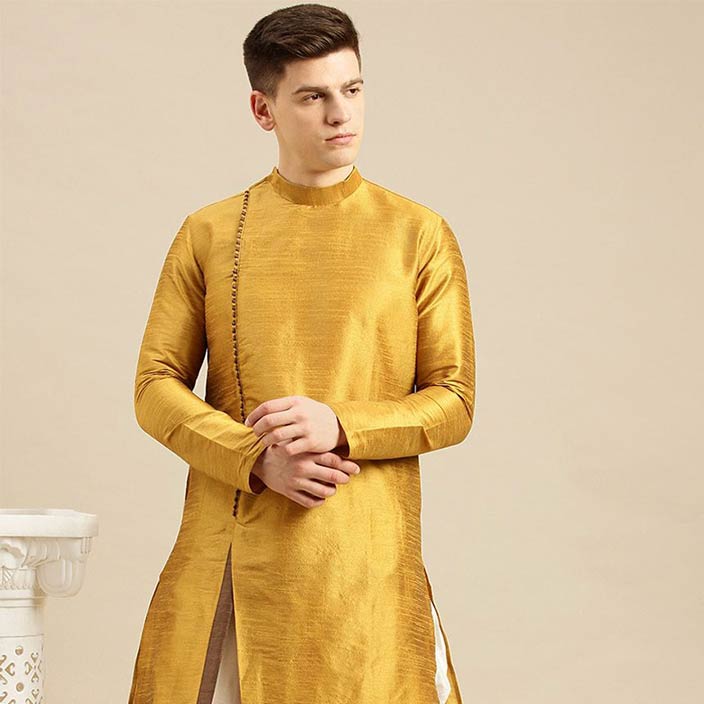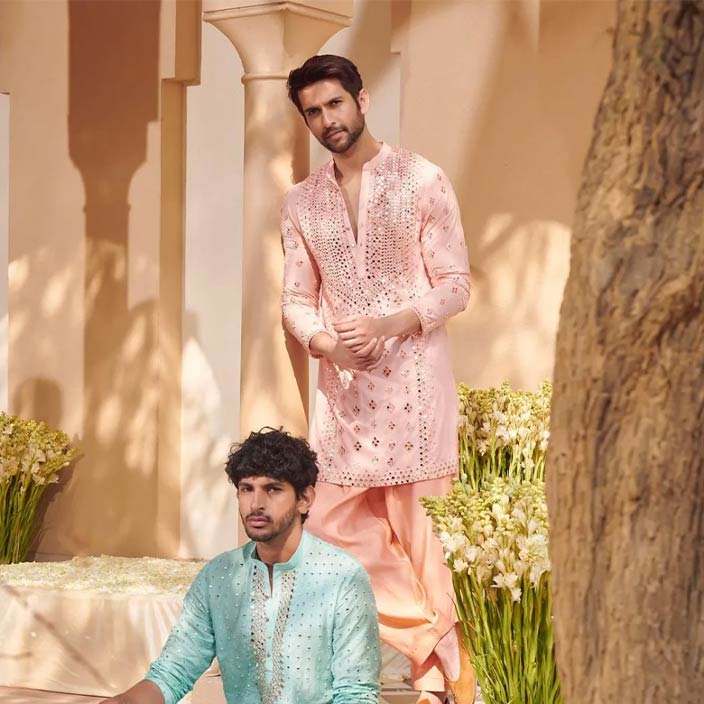For best prices and early deliveries, WhatsApp us at. 918488070070

Kurta
Kurtas are a vital traditional outfit of the people of India. A kurta can be defined as an upper-body garment or long tunic paired with a salwar or churidar, completing the look with a dupatta. Kurtas replaced the traditional Angrakha garment, that was a half-stitched tunic fastened with strings and loops. A famous rendition- the Punjabi Kurta became famous in Punjab during the 1960s, which is why Kurtas are still colloquially called "Punjabi" in West Bengal and Bangladesh. Over time, the basic Kurta silhouette has transcended borders and evolved through the decades to suit modern trends and sensibilities.
History Of The Kurta
With a cultural shift during the Muslim conquests of the 12th century, Kurtas became a staple clothing of the Mughal period. The Kurta especially gained popularity amongst the artists, poets and scholars during the 19th century, as it was considered as the garment for educated men.
The silhouette is one of the very first tailored garments made in India.
Evolution Of The Kurta
The evolving fashion of the 1960s and 70s gave the Kurta a surge of popularity as women started to get inclined towards laidback and comfortable clothing, with relaxed societal restrictions. While the traditional styles continued to be paired with salwars and churidars, trendy and modern styles were sported on top of jeans and leggings.
From printed patterns to intricate embroideries, short lengths to maxi lengths- Kurtas started spreading in variety with their increasing demand.
A kurta is a traditional Indian garment that is typically paired with loose-fitting pants or a dhoti, and is sometimes worn with a Nehru Jacket for a more formal look.
Design Elements
Ideally made on a long piece of fabric covering the knee, a Kurta is defined as a unisex shirt or tunic. This simple silhouette is a canvas for various types of cuts and designs; It is a tailored, slip-on fit with or without button closure. The earliest version of a Kurta featured a simple neckline with straight sleeves that had no stylized design. The sleeves were just cut straight, along the arm length. The most common variation of a Kurta is the straight and A-line fit. Flared kurtas with pleated gher are also extremely popular and find their roots in the Mughal Era. These flared kurtas with pleats/gathers, known as “anarkalis” were extremely popular during the Mughal rule; It was worn by everyone during the era - from the Emperor and his courtiers to the court dancers.
All Kurtas are typically paired with a churidar or salwar. A fancy dupatta is an additional accessory that completes the look. But over time, Indian designers have explored almost every fabric and pattern there is- to iterate unique varieties of the classic Kurta.
Shop Kurtas
Pernia's Pop-Up Shop offers its global clientele a universally appealing collection of Kurtas by top Indian designers like Anita Dongre, Ritu Kumar, Rohit Bal, Tarun Tahiliani, Shyam Narayan Prasad, Masaba and many others. With a range of traditional and fusion styles, the collection of Designer Kurtas on Pernia’s Pop-Up Shop promises to cover you for any and every occasion.

